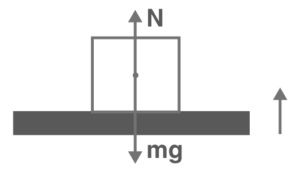a) will there be any change in weight of the body, during the oscillation?
b) if the answer to part a) is yes, what will be the maximum and minimum reading in the machine and at which position?
Answer:

(a) According to the question, frequency
We know that,
Also, the amplitude is
The body’s usual reactor will be measured as weight by the weighting equipment.
Now, consider to be the acceleration, then we can write:
![]()
![]()
Now, referring to the image above and balancing the force
Now
……..(1)
As a result, the machine’s weight will be smaller than the real weight.
or (2)
Which shows the weight measured by the machine will be greater than the actual.
So, the answer is “Yes”
(b) Upon putting the known values, we get that the maximum weight is 885 N while the minimum weight is 95.5 N.
